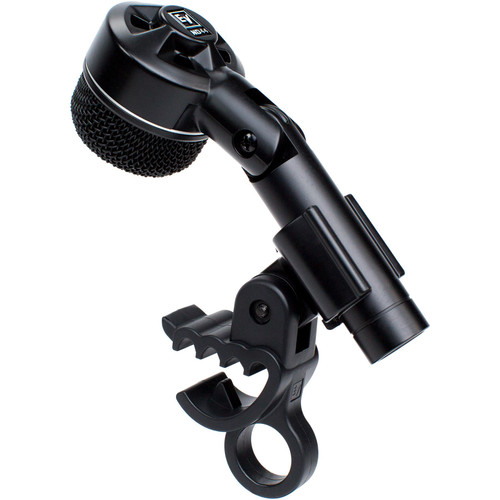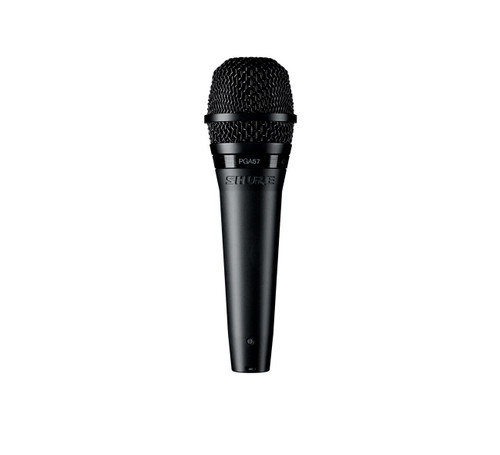The ND44 is a robust, high-performance, large-diaphragm dynamic instrument microphone with a tight cardioid polar pattern. Designed for excellent performance on drums and other rhythm section instruments, the ND44 capsule is precisely tuned to deliver the aggressive and punctuated sound these instruments produce, as well as excellent isolation from the sound of other nearby instruments. Its rotating low-profile head and drum rim clamp make mic placement easy anywhere on a drum set.
Electro-Voice ND44 Features
- Excellent acoustic control
- Large-diaphragm dynamic capsule
- Easy mic placement with low-profile pivoting head
- DRC-2 drum rim clamp with easy-to-use finger loop design
- Humbucking coil guards against line hum
- Memraflex grille resists denting
About Dynamic Microphones at Sound Productions
If you’re looking for an all-purpose, heavy-duty microphone, look no further than a dynamic microphone. Equally outstanding in both the studio and live on stage, dynamic mics are an affordable, versatile, and classic option for nearly every miking application. Popular uses include live performances, studio recordings, man-on-the-street style interviews, as well as podcasts that aim for a professional “radio voice” polish.
Dynamic microphones work using a coil attached to a magnet. When sound waves cause the coil to vibrate up and down against the magnet, an electromagnetic current is induced; in simple terms, this turns the sound into an electronic signal to be channeled into a recorded version or—in the case of live sound—into a speaker to distribute the sound to the audience.

What’s in the Box?
- ND44 cardioid dynamic instrument microphone1
- Transducer TypeDynamic
- Polar PatternCardioid
- Frequency Response80 Hz - 16.5 kHz
- Output Impedance350 ohms
- Sensitivity2.4 mV/Pa
- Max. SPL>140 dB
- Power Requirementpassive
- Connector Type3-pin XLR
- Dimensions5.47" height x 1.91" diameter
- Weight6.84 oz
































